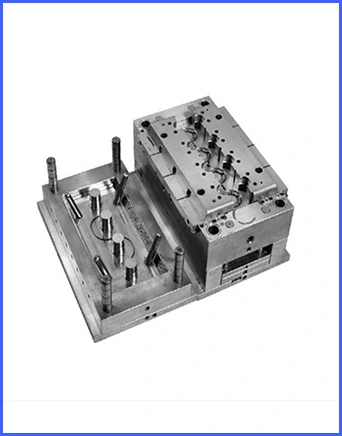Time to read: 6 min

The manufacturing industry is undergoing a significant transition, with low-volume injection molding emerging as a key process to address the need for small batch production with consistent quality. This method allows manufacturers to produce plastic parts with precision and efficiency, making it an advantageous choice in the current market landscape.
On-Demand Manufacturing in Injection Molding
On-demand manufacturing, a novel concept, is revolutionizing the interaction between engineers, suppliers, and manufacturers, especially in custom plastic fabrication. Advanced technologies are streamlining the supply chain, reducing quoting delays, and enhancing prototype manufacturing techniques.
Key Benefits of Low-Volume Injection Molding
- Softer Aluminum Tooling: Aluminum molds are faster and easier to work with than traditional hardened steel molds.
- Quality Parts Manufacturing: Despite using softer tooling, the process ensures durable and functional parts.
- Cost-Effectiveness: Avoids minimum order demands and reduces reliance on outdated inventory.
- Shorter Lead Times: The process accelerates production, leading to faster time to market.
- Design Flexibility: Allows for easy modifications before consumer release.
- Bridging for Scale: Serves as an initial step for mass production, fine-tuning the product and process.
Design Considerations for Low-Volume Plastic Parts
- Material Selection: Choose the right thermoplastic resins based on part application and environment.
- Part’s Finish: Opt for a cost-effective finish compatible with the part’s function.
- Wall Thickness: Maintain a consistent wall thickness within the recommended range.
- Radii for Corners: Use rounded edges to prevent stress concentration.
- Draft for Ejection: Incorporate draft angles for easier part removal.
- Multi-Cavity Molds: Consider for producing multiple identical parts in a single shot.
The Process of Low Volume Plastic Molding
- Tooling and Mold Design: Identify specifications and materials for mold design.
- Prototyping: Utilize 3D printing to create and refine prototypes.
- Injection Molding Machine Setup: Prepare the mold and configure the machine settings.
- Injection Molding Process: Includes clamping, injection, cooling, and ejection sub-steps.
- Quality Control and Post-Processing: Inspect parts and apply secondary finishing operations.
Key Applications of Low-Volume Injection Molding
- Rapid Prototyping: Ideal for quick and cost-effective production of plastic parts.
- Small Batch Injection Molding: Economical solution for small-scale production.
- On Demand Injection Molding: Produce parts based on demand, reducing inventory costs.
Choosing the Right Partner for On-Demand Injection Molding Services
Select a partner based on volume capacity, specialization, specification compliance, flexible services, efficiency, and quality.
Unofactory Low-Volume Injection Molding Services
Unofactory offers fast, quality-focused low-volume injection molding services with a rapid quotation system and a commitment to short lead times and budget-friendly prices.
Alternatives to Low-Volume Plastic Injection Molding
- 3D Printing: No mold creation required, short lead time.
- CNC Machining: Versatile for quick production runs.
- Thermoforming: Low-temperature process suitable for simple components.
- Urethane Casting: No upfront cost, reduced lead time, suitable for early design testing.




